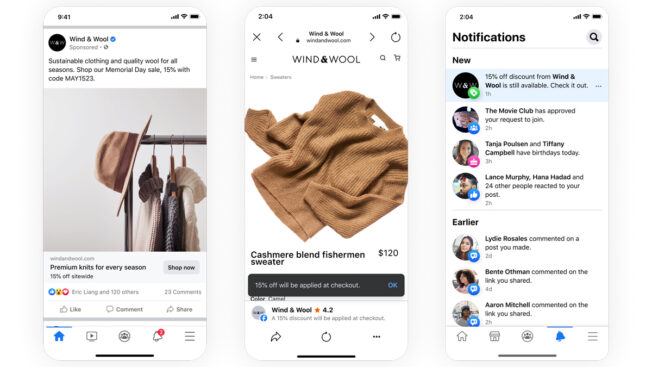Pay to Play: Focus Turns to How Platform Verification Subscriptions Impact Reach
Transforming your ad sales process just got a lot easier. Learn how to extract more value for existing technology and ultimately drive revenue, ratings and retention in Slack’s new white paper.
As the popularity of platforms like TikTok and Instagram grow, people are getting discovered faster and entering influencer status sooner.
With Instagram parent Meta and Twitter both recently rolling out subscription products—where people can become verified overnight—there is no longer the need to build out online portfolios proving themselves as experts to support a claim of being worthy of verification.
Twitter’s blue tick verification has been around since 2009 as a way for celebrities, politicians, news brands, or other notable people with accounts to show their authority.
With new owner Elon Musk making changes to the verification process—including making people subscribe to the monthly $8 Twitter Blue service to receive a check, partly to crack down on parody accounts and grow revenue—brands and creators are left wondering whether subscription-based verification from platforms is the new normal and whether they will need to pay to not only prove their identity but help maintain their visibility online.
“I’ve worked with clients in the past who worked to establish themselves as a public figure and earn the blue check,” said Drea Fernandes, CEO and founder of Speak Media Group. “Publicists know that there’s real work that went into helping a client get verified.”
The Twitter Blue(s)
When Twitter’s Blue subscription was announced in 2021, many doubted there would be enough of an audience to pay for the additional features, such as an edit tweet button.
Now, subscribing to Twitter Blue is the only way to add a blue checkmark to your account. Subscribers also get early access to select features, as well as priority the rankings of their tweets in conversations and search.
It’s important to be verified so you don’t have to deal with any misleading impersonations
Gigi Robinson, creator
In April, Twitter removed many legacy blue checks from those who were not Twitter Blue subscribers, leaving journalists, creatives, actors and others opting not to pay for the blue check.
“After working for years to build up my portfolio as a creator and reputation in the process as a thought leader, I was initially frustrated with the fact that anyone could just buy a blue checkmark,” said Gigi Robinson, creator and chronic-illness advocate.
“When you get to a certain level as a creator, journalist or are notable in public spaces, it’s important to be verified so you don’t have to deal with any misleading impersonations,” she added.
For small businesses or brands looking for credibility online, paying for Twitter’s verification service to access Twitter Blue’s feature of prioritized rankings in conversations and search makes some sense.
“It is beneficial to brands, especially smaller and mid-sized brands that maybe don’t have that established presence as much just to get some of that verification,” said Cameron Clow, senior director of creative strategy at Day One Agency.
With the majority of Twitter users preferring not to subscribe to the service, marketers and social media managers are left wondering how this will affect their companies’ organic reach and if this type of model for social media is here to stay.
Meta follows
When one platform makes a change, others often follow. In February, Meta announced its subscription program Meta Verified.
For between $11.99 and $14.99 a month, Instagram and Facebook users get a blue verified mark as well as access to better security features, more visibility in search, access to Meta support and more. For now, it’s only available to creators and individuals in the U.S., Australia and New Zealand.
For creators looking for credibility, this was good news. But marketers and communications professionals raise the same concerns spurred by Twitter Blue since, to apply for Meta Verified, people need to prove their identity with a form of a government-issued ID.
Going forward, marketers are monitoring these newer models to see how they affect their business.
Still, many marketers know that building their followings through platforms means they don’t truly own their audiences.
“It is a great tool for those creators, professionals and anyone that’s trying to make their living in the space…Give them that stamp of credibility,” said Clow. “If you’re pursuing that, eight to $15 a month is a small investment.”
https://www.adweek.com/media/pay-to-play-focus-turns-to-how-platform-verification-subscriptions-impact-reach/

